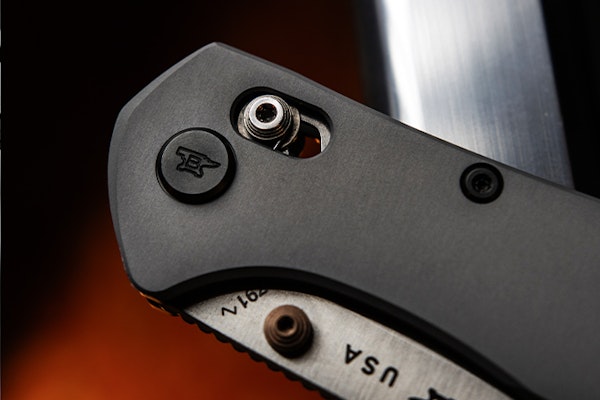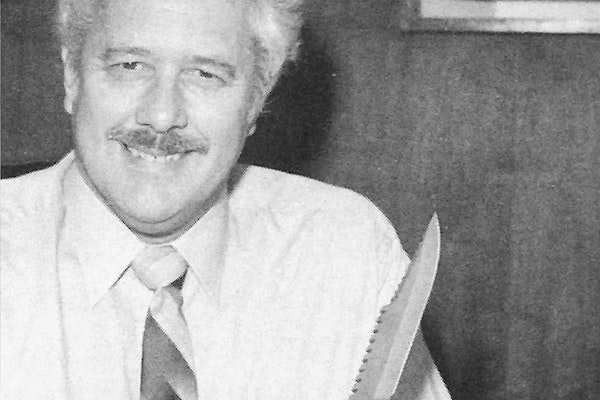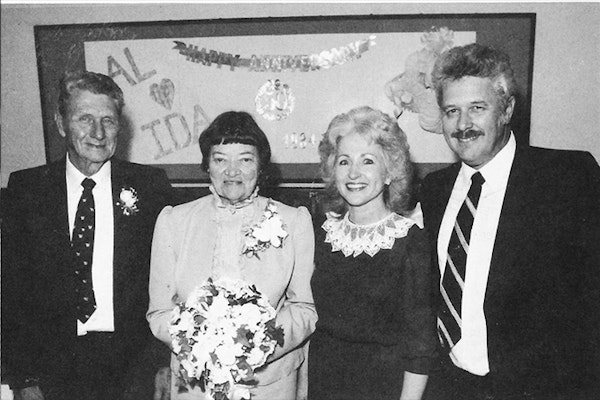
CHAPTER 18: THE BUBBLE BURSTS
By December 1981, it was obvious that Buck Knives would post its best
year ever. That was the good news. But the bad news was that the bubble had already burst, for America and for Buck. 'The national recession had cut deeply into discretionary spending.
Buck's fourth-quarter sales had dropped precipitously. For the first time in company history, the inventory of unsold knives was beginning to fill the warehouse, and there was no relief in sight.
"We kept trying to find a silver lining in all those dark clouds, but things seemed to go from bad to worse," Buck recalled. "It was more than a simple downturn in our sales. America's economy had gone so soft that hundreds of our dealers had gone out of business. Those still in business had knives sitting on their shelves; they were not about to build their inventories.
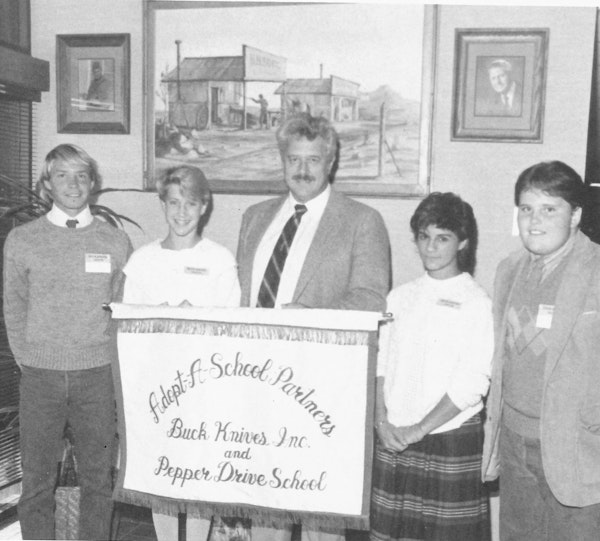
"When your entire operation has been built on independent retailers, and they aren't there anymore, you've got serious problems."
With the warehouse full of unsold inventory, and orders slowing to a trickle, Chuck Buck was forced to make one of the toughest decisions of his life. In February 1982, he began furloughing employees. By April, the number reached nearly 300, almost half the work force.
"I can't tell you how much that hurt," he admitted sadly. "For years we had talked of the Buck Family,' and our employees had responded to that; they'd come through in every way. To let people go, knowing the hardship it would create for them, was very, very difficult."
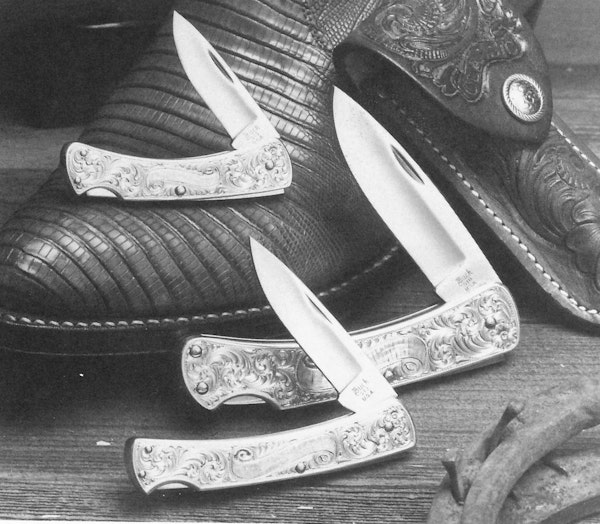
In July, the company had to get a loan that ran into the millions. With interest rates having soared to 16% at that time, the debt service alone was more than a thousand dollars a
By December, the enormity of the problem had long since become evident. Buck had been able to retire the loan, but it did so by selling knives built the year before, in 1981
- knives that had been in the warehouse since January. And a company that had seen its sales set a record in '81 saw them plummet by almost 30% in '82.
The national recession, which crippled many industries heavily reliant on discretionary spending, had been a major factor. But Buck's inability to cope successfully forced them to take a hard look at some basic company policies that had been followed from the beginning.
Despite the emergence of such national mass merchandising chains as Kmart, Walmart and Target, Buck had chosen to continue to focus their marketing efforts on independent retailers.
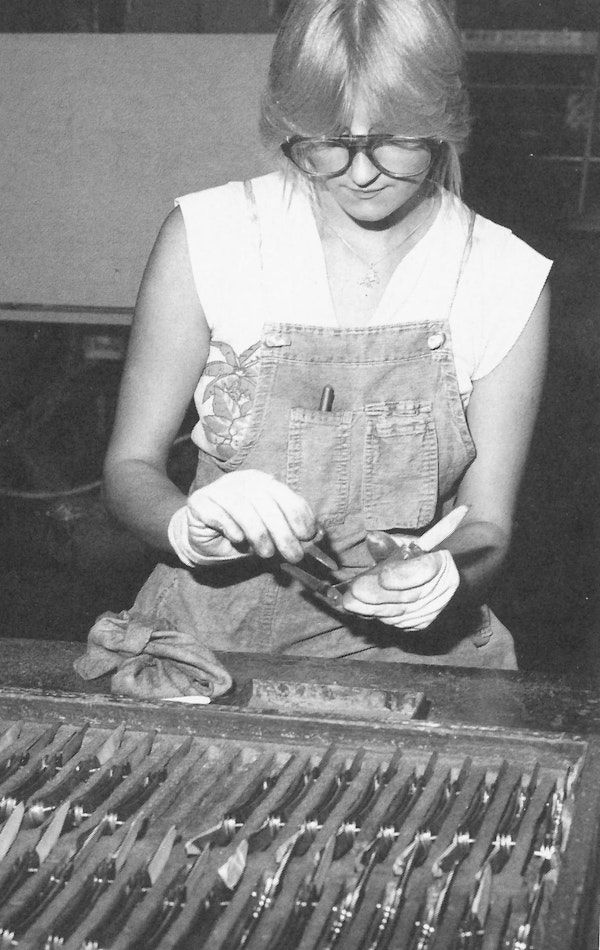
Also, at that time, Buck had minimal exposure overseas. And, though they had introduced many new products in the '70s, they had not made a major-impact addition to the product line since unveiling the Folding Hunter in the '60s.
Secure in a sales curve that showed steady growth, Buck had not taken any significant strides to respond to a changing market. And the results were spelled out clearly in the sales and profit figures for 1982.
To his credit, Chuck Buck did not flinch. He already had mechanized the company's
internal systems. Now, he turned his attention to marketing and sales.
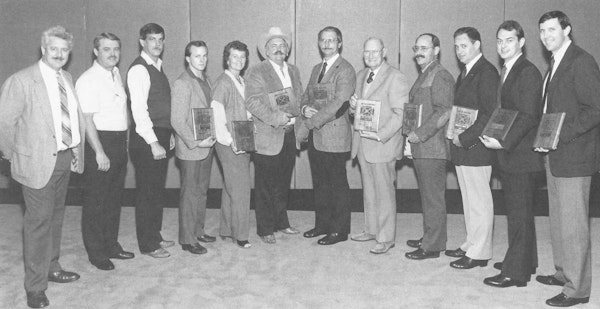
"In one sense, we were fortunate," Buck said. "Unlike many other companies who were struggling at that time, we still had some very important assets.
"Our name recognition was excellent. The quality of our product was great. We had just moved into a modern, new plant and had streamlined our production process. So we had some key things going for us. We just had to find ways to get things going out the door again."
To support this new effort, the company hired Charlie Gregory as National Sales Manager. Gregory came to Buck from the Kidder Corporation, which owned such sporting goods firms as Daisy-Heddon Rifles, PGA Golf, Bear Archery and Valley Pool Tables.
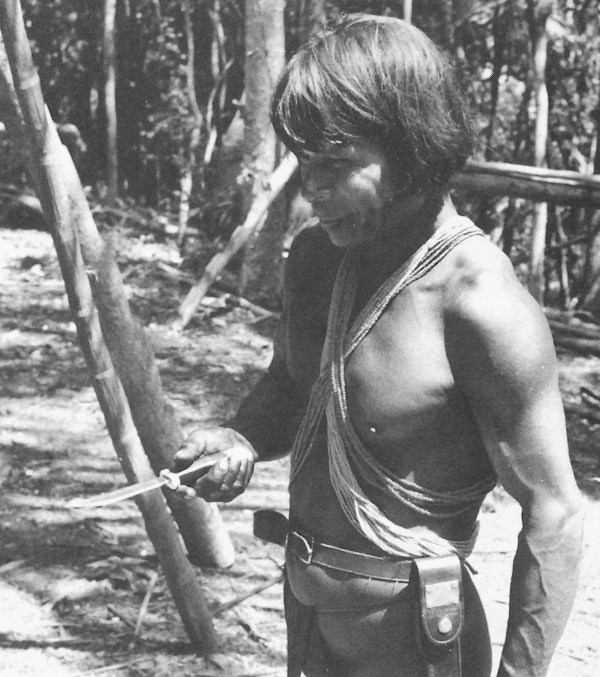
Gregory had been the national director of special marketing and, as such, brought a wealth of experience in dealing with national retailers, the very aspect Buck had ignored in the past. Working together, Buck, Bloom and Gregory reviewed all of the company's sales policies. As a result, they rewrote many to fit the new market environment facing them.
"By far the biggest issue was whether or not to alter Buck's total reliance on independent retailers," said Gregory, now vice president of marketing and sales. "Buck had a tremendous loyalty to those dealers. The company had been built on the foundation they provided.
"But, by 1982, independent sporting goods merchants were fast becoming an endangered species. Americans were buying more and more of their equipment from discount chains, and from major sporting goods chains such as Oshman's and Big 5.
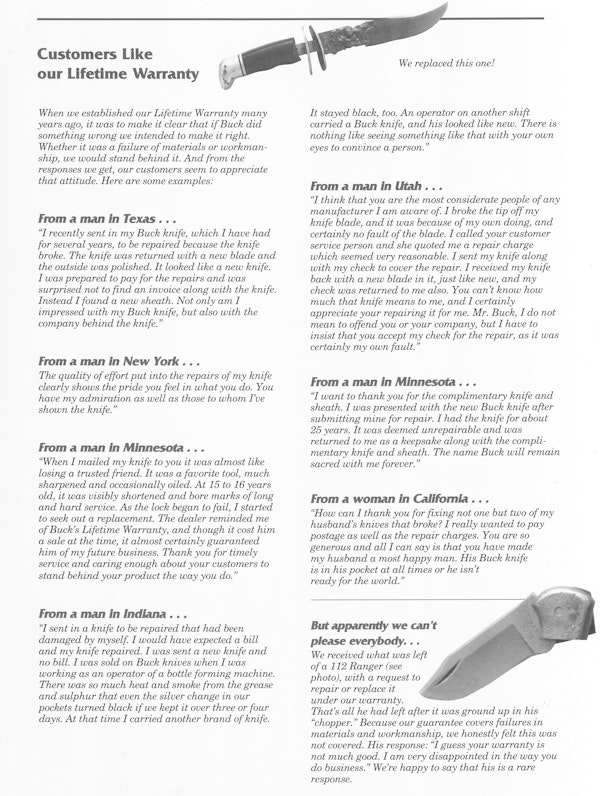
"Jim and I were firmly convinced that we needed to work with the big boys," Gregory recalled. "Chuck was torn, I think, but he eventually agreed to give it a try."

